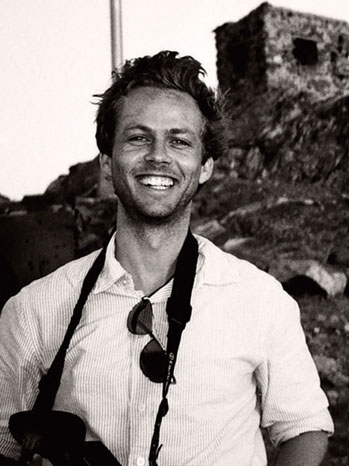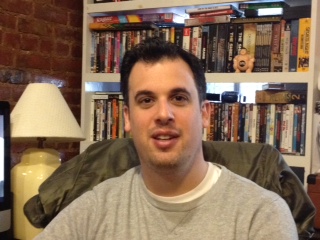|
|
||
|
Pro Tools
FILMFESTIVALS | 24/7 world wide coverageWelcome ! Enjoy the best of both worlds: Film & Festival News, exploring the best of the film festivals community. Launched in 1995, relentlessly connecting films to festivals, documenting and promoting festivals worldwide. Working on an upgrade soon. For collaboration, editorial contributions, or publicity, please send us an email here. User login |
Interview with Peter Scarlet, Tribeca FF Director
Thursday, April 26-----As the Tribeca Film Festival opens its sixth edition, we are re-printing an interview with Festival Director Peter Scarlet from the Festival's own blog site: Can you paint a picture of the viewing process? SCARLET: The viewing process is a nonstop one, but programming is a lot more pro-active and a lot less passive than one might think. In essence my job involves a good deal of detective work, a nearly endless schedule of traveling (sometimes to “fun” places, sometimes not)- both to other festivals to see what they're showing and to suss out what they’re not showing: what wasn’t ready, what got turned down, what’s in the works. And to capitals where festivals aren’t taking place at the time of my visit, but where I meet with filmmakers, producers, representatives of national film commissions, etc. Those have goals which are both exploratory and explanatory – finding out what’s going on and explaining at least a little of what Tribeca FF is all about. How and when do you watch them all? When you are in a room together, how does the selection process occur? SCARLET: We (the programming team) very rarely watch films together- usually when a film from a studio isn’t completed, or needs to be seen in the kind of security-ridden conditions of a messenger from Fox bringing a print or a video copy down to the screening room, handing it to the projectionist, and then riding off with it afterward. That’s maybe 1% of the films we see. The rest are either at festivals (as noted above) or the mountains of DVD’s we bring home and, in my case, am often watching between 5 and 9 am. This year- were there any themes/noteworthy trends that emerged from the submission pool? SCARLET: Trends? Well, we never go out looking for them, at least I don’t, but some appear. This year for example, there were significantly fewer films about the war in Iraq, for what I think is a very simple reason: with the situation there growing more dangerous every day, and with the fatality figures for journalists reaching high levels last year, it’s simply that fewer filmmaker are willing to risk going there. About the only exception – and the only film made there we’re showing – is a British film I AM AN AMERICAN SOLDIER: ONE YEAR IN IRAQ WITH THE 101ST AIRBORNE made by folks who, on the evidence of the access they had, must have been embedded for a year with a squad of American soldiers, who head off to war full of piss and vinegar, and return home, those who do, with various grievous wounds and missing pieces of their bodies (and souls). Another of our offerings helps place this in a broader perspective: an Armenian doc called A STORY OF PEOPLE IN WAR AND PEACE…what the film offers is something quite remarkable: it’s made by a filmmaker who covered the war at the time, and who inter-cuts his old footage with interviews he’s filmed now with the surviving soldiers. But above all, perhaps because it focuses on a war whose particulars aren’t familiar to us, and whose vitriol and tears aren’t embossed into our hearts, it succeeds heartbreakingly in driving home the fact that somehow we know that nothing justifies the fact of taking the precious, irreplaceable life of even a single human being. In fact, one of those “other” wars – seemingly fading from headlines for while, risking becoming boring because it was “so last year”, is now very much back in the minds of filmmakers, and is very much present in our program. I’m speaking of Afghanistan, of course – and it’s probably another flash-in-the-pan, both because it’s now gotten to the point in the past few weeks that it’s almost more dangerous in Kabul than in Baghdad, and THIS YEAR filmmakers are probably hesitant to go. But LAST YEAR – and these are the films we’ll be showing, a number of films were shot there… including POSTCARDS FROM TORA BORA, a first effort by a young Afghan woman whose father sent his wife and family to safety in the States when the Soviets invaded in the 80’s and things got really ugly. Now she heads to Kabul from NY in an attempt to learn about her homeland’s history, and about the father who, when she was a teenager, thought was just a bastard who’d dumped his family. Now, she begins to understand, he’s a guy who was suddenly plunged into politics unexpectedly, but who decided that he owed it to his country to stay and try to defend it while he sent his family to safety. It’s a personal film that’s full of personality. It also links to other films made by young women – THE MAN OF TWO HAVANAS – made by a filmmaker whose father was a close associate of Fidel Castro during his youth in Cuba, but who broke with him in the early 60s and moved to Havana, where he’s both a respected figure and something of a target. The film is this daughter’s attempt, through visits to Havana and elsewhere, to understand HER father and a broader past. And then there’s THE SUGAR CURTAIN, made by a young woman whose father was one of the most forceful cinematic voices in Chile – his doc about the fall of the Allende government THE BATTLE OF CHILE – was hailed as a masterpiece by Pauline Kael – but who was forced into exile in Cuba when Pinochet came to power. So his daughter grew up there, a child of the revolution. Now years later she and her father live in Paris; her film is, unlike the other, not one that deals directly with her father at all, but one which focuses instead on how the Cuban revolution came to feel, to her and thousands of other, almost sadly irrelevant. The most direct ties POSTCARDS FROM TORA BORA has with other films in the program are with ZOLYKHA'S SECRET, the first entirely Afghan-produced feature since OSAMA startled everyone by winning the Golden Globe for best foreign film in 2004. And the film, WHY DIDN’T ANYBODY TELL ME IT WOULD BECOME THIS BAD IN AFGHANISTAN, shot by a Dutch filmmaker entirely on his cell phone, shot virtually without dialogue. Sandy Mandelberger, Festival Online Dailies Editor 27.04.2007 | Tribeca Film Festival's blog Cat. : A Story of People in War and Peace Afghanistan Baghdad Chile Cuba Entertainment Entertainment Festival Festival Online Dailies Fidel Castro Film Film festival Films HAVANA Iraq KABUL Nagorno-Karabakh conflict paint Paris Pauline Kael Peter Scarlet Peter Scarlet Pinochet printing Sandy Mandelberger Technology Technology the Golden Globe the Tribeca Film Festival Tribeca Film Festival Tribeca Film Festival
|
LinksThe Bulletin Board > The Bulletin Board Blog Following News Interview with EFM (Berlin) Director
Interview with IFTA Chairman (AFM)
Interview with Cannes Marche du Film Director
Filmfestivals.com dailies live coverage from > Live from India
Useful links for the indies: > Big files transfer
+ SUBSCRIBE to the weekly Newsletter Deals+ Special offers and discounts from filmfestivals.com Selected fun offers
> Bonus Casino
User imagesAbout Tribeca Film Festival Online Dailies Coverage of the Tribeca Film Festival, April 17-28, 2013
The Tribeca Film Festival brings together local, national, and international talent to provide the New York City, downtown community with five days of screenings, educational workshops, and various special events.
View my profile Send me a message My festivalThe EditorUser links |





























